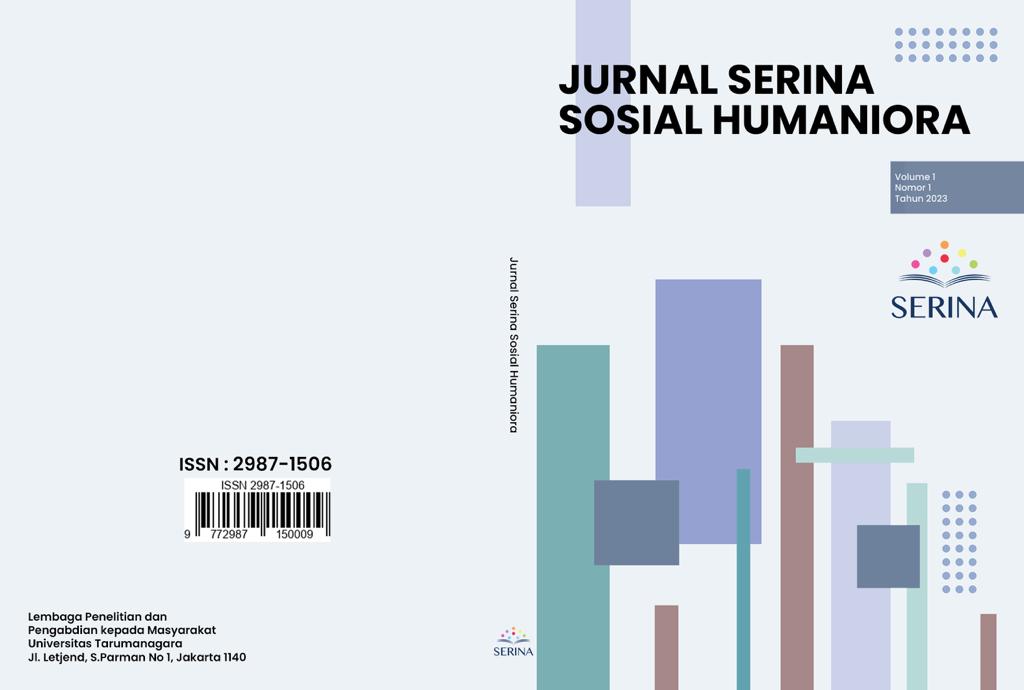PROYEK BUKU PANDUAN: MENGENALI DAN MENGATASI FENOMENA DIGITAL STRESS PADA KARYAWAN DI PERUSAHAAN BERBASIS TEKNOLOGI
Main Article Content
Abstract
ABSTRACT
Along with the development of technology and information, the number of technology-based companies is also increasing. In addition, with the COVID-19 pandemic, digitalization in the professional and social spheres has also increased. This resulted in employees of technology-based companies, which had already utilized the use of technology in their work; now getting more and more exposure to digital tools, even in terms of communicating. This creates certain expectations of employees, for example, they are expected to always be available, which can cause employees to feel stressed; as well as fatigue from unimaginable communication load. Some of these things are components of digital stress that employees of technology-based companies may feel, but are not aware of. Here we are who has the opportunity to experience working in a technology-based company, the author can experience firsthand how technology is utilized in a technology-based company. Therefore, the author compiled a guidebook entitled "NOW DIS: Knowing About Digital Stress" which is expected to bring benefits to readers, especially for employees in technology-based companies. Through this guidebook, readers get an explanation of the situations or feelings they experience, as well as get tips on overcoming and preventive measures against these phenomena.
Keywords: Technology utilization, tech-based company, digital stress.
ABSTRAK
Seiring dengan berkembangnya teknologi dan informasi, terdapat jumlah perusahaan berbasis teknologi juga semakin meningkat. Ditambah lagi, dengan adanya wabah pandemi COVID-19, digitalisasi dalam ranah profesional maupun sosial pun kian meningkat. Ini mengakibatkan karyawan perusahaan berbasis teknologi, yang pada awalnya memang sudah mengandalkan penggunaan teknologi dalam bekerja, kini mendapatkan paparan yang semakin banyak terhadap alat digital dan teknologi canggih, bahkan termasuk dalam hal berkomunikasi. Hal ini membuat adanya suatu ekspektasi tertentu terhadap para karyawan, misalnya diharapkan untuk selalu available, yang dapat mengakibatkan karyawan merasa stres dan kelelahan atas communication load yang tidak dapat dikendalikan. Beberapa hal ini merupakan bentuk dari komponen digital stress yang mungkin dirasakan oleh para karyawan perusahaan berbasis teknologi, namun hal ini tidak disadari oleh para karyawan. Di sini kami mendapatkan kesempatan berupa pengalaman bekerja di perusahaan berbasis teknologi, dalam hal ini penulis dapat merasakan langsung bagaimana utilisasi teknologi di perusahaan berbasis teknologi. Oleh karena itu, penulis menyusun guidebook berjudul “NOW DIS: Knowing About Digital Stress” yang diharapkan dapat membawa manfaat bagi pembaca, khususnya bagi karyawan di perusahaan berbasis teknologi. Guidebook ini memuat informasi tentang fenomena digital stress, pengertian, komponen, tipe-tipe, dan dampak dari digital stress tersebut, serta cara menangani keadaan seseorang jika terkena dampak dari digital stress. Tersaji juga quick test untuk melihat gambaran awal tingkat digital stress pembaca melalui barcode yang terlampir di dalamnya. Melalui guidebook ini, pembaca telah mendapatkan penjelasan atas situasi atau perasaan yang mereka alami, serta mendapatkan tip-tip dalam mengatasi dan upaya pencegahan terhadap fenomena tersebut.
Kata Kunci: Utilisasi teknologi, karyawan perusahaan berbasis teknologi, digital stress.
Article Details
References
Cao, X., & Sun, J. (2018). Exploring the effect of overload on the discontinuous intention of social media users: An SOR perspective. Computers in human behavior, 81, 10-18.
Craven, M., Liu, L., Mysore, M., & Wilson, M. (2020). COVID-19: Implications for business. McKinsey & Company, 8.
D’Arcy, J., Herath, T., & Shoss, M. K. (2014). Understanding employee responses to stressful information security requirements: A coping perspective. Journal of Management Information Systems, 31(2), 285–318. doi:10.2753/mis0742-1222310210
Pandey, N., & Pal, A. (2020). Impact of digital surge during Covid-19 pandemic: A viewpoint on research and practice. International Journal of Information Management, 55, 102171. https://doi.org/10.1016/j.ijinfomgt.2020.102171
Fischer, T., & Reuter, M., & Riedl, R. (2021). The Digital Stressors Scale: Development and Validation of a New Survey Instrument to Measure Digital Stress Perceptions in the Workplace Context. Frontiers in Psychology. https://doi.org/10.3389/fpsyg.2021.607598
Frey, C. B., & Osborne, M. A. (2017). The future of employment: How susceptible are jobs to computerisation?. Technological Forecasting and Social Change, 114, 254–280. doi:10.1016/j.techfore.2016.08.019
Galluch, P., Grover, V., and Thatcher, J. B. (2015). Interrupting the workplace: Examining stressors in an information technology context. Journal of the Association for Information System.16, 1–47. DOI:10.17705/1jais.00387
Hefner, D., & Vorderer, P. (2016). Digital stress: Permanent connectedness and multitasking.
In The Routledge handbook of media use and well-being, 237-249. Routledge.
Hwang, I., and Cha, O. (2018). Examining technostress creators and role stress as potential threats to employees‘ information security compliance. Computers in Human Behavior, 81, 282–293. doi: 10.1016/j.chb.2017.12.022
Leonardi, P. M. (2020). COVID and the new technologies of organizing: Digital exhaust, digital footprints, and artificial intelligence in the wake of remote work. Journal of Management Studies. doi:10.1111/joms.12648
Maier, C., Laumer, S., Weinert, C., and Weitzel, T. (2015). The effects of technostress and switching stress on discontinued use of social networking services: A study of facebook use. Inform. Syst. J. 25, 275–308.
Park, C. Y., & Inocencio, A. M. (2020). COVID-19 is no excuse to regress on gender equality. ADB Briefs. http://dx.doi.org/10.22617/BRF200317-2
Riedl, R., Kindermann, H., Auinger, A., & Javor, A. (2012). Technostress from a neurobiological perspective. Business & Information Systems Engineering, 4(2), 61-69.
Schellhammer, S., and Haines, R. (2013). “Towards contextualizing stressors in technostress research,” in Proceedings of the International Conference on Information Systems AIS (Chair), Milan.
Schneider, S., & Sunyaev, A. (2016). Determinant factors of cloud-sourcing decisions: Reflecting on the IT outsourcing literature in the era of cloud computing. Journal of Information Technology, 31(1), 1-31. https://doi.org/10.1057/jit.2014.25
Stock, R. M. (2014). Is boreout a threat to frontline employees’ innovative work behavior?.
Journal of Product Innovation Management, 32(4), 574–592. doi:10.1111/jpim.12239
Vorderer, P., & Kohring, M. (2013). Permanently online: A challenge for media and communication research. International Journal of Communication, 7(1), 188-196.



